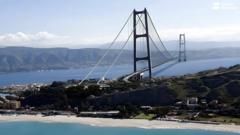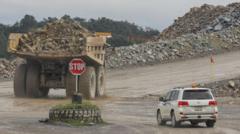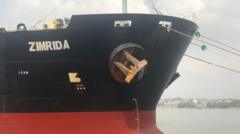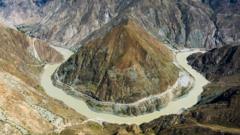On May 21, 2025, the U.S. Interior Department announced its intention to assess a California-based firm’s proposal for seabed mining operations off American Samoa, furthering the president's push to expedite permits for such activities. This follows an executive order issued last month that encourages more aggressive steps towards mining in U.S. waters, despite legal and environmental concerns. While parts of the ocean floor hold rich deposits of critical minerals, the U.S. faces international backlash over its unilateral approach.
U.S. Government Moves to Review Seabed Mining Proposal Off American Samoa

U.S. Government Moves to Review Seabed Mining Proposal Off American Samoa
A significant step towards seabed mining in U.S. waters as the Interior Department reviews a new extraction proposal near American Samoa.
The exploration of the seabed several miles deep in the Pacific Ocean is inching closer to becoming a reality, as reflected in a recent announcement from the U.S. Interior Department. This decision involves evaluating a proposal from Impossible Metals, a California-based company striving to extract valuable minerals from the ocean floor near American Samoa.
The proposed mining operations are part of a broader trend following an executive order in April that sought to accelerate the permitting process for seabed mining in both U.S. and international waters. This move aligns with efforts to secure essential metals—like nickel, cobalt, and manganese—that are critical to modern technology, especially given that the U.S. supply chains for these materials are increasingly dominated by China.
Despite the potential economic benefits, seabed mining remains a contentious issue. No commercial-scale operations have been conducted thus far, primarily due to technological challenges and significant environmental concerns. Historically, international treaties, notably one adopted by most countries—excluding the United States—mandate that mining in international waters should only commence once comprehensive regulations and environmental protections are established.
Many governments and activist organizations have expressed outrage towards the recent U.S. executive order, asserting that it violates accepted international law by allowing unilateral mining activities beyond territorial waters. The tension between economic interests and global environmental standards continues to be a critical point of debate as the U.S. explores the high-stakes realm of seabed mining.
The proposed mining operations are part of a broader trend following an executive order in April that sought to accelerate the permitting process for seabed mining in both U.S. and international waters. This move aligns with efforts to secure essential metals—like nickel, cobalt, and manganese—that are critical to modern technology, especially given that the U.S. supply chains for these materials are increasingly dominated by China.
Despite the potential economic benefits, seabed mining remains a contentious issue. No commercial-scale operations have been conducted thus far, primarily due to technological challenges and significant environmental concerns. Historically, international treaties, notably one adopted by most countries—excluding the United States—mandate that mining in international waters should only commence once comprehensive regulations and environmental protections are established.
Many governments and activist organizations have expressed outrage towards the recent U.S. executive order, asserting that it violates accepted international law by allowing unilateral mining activities beyond territorial waters. The tension between economic interests and global environmental standards continues to be a critical point of debate as the U.S. explores the high-stakes realm of seabed mining.






















